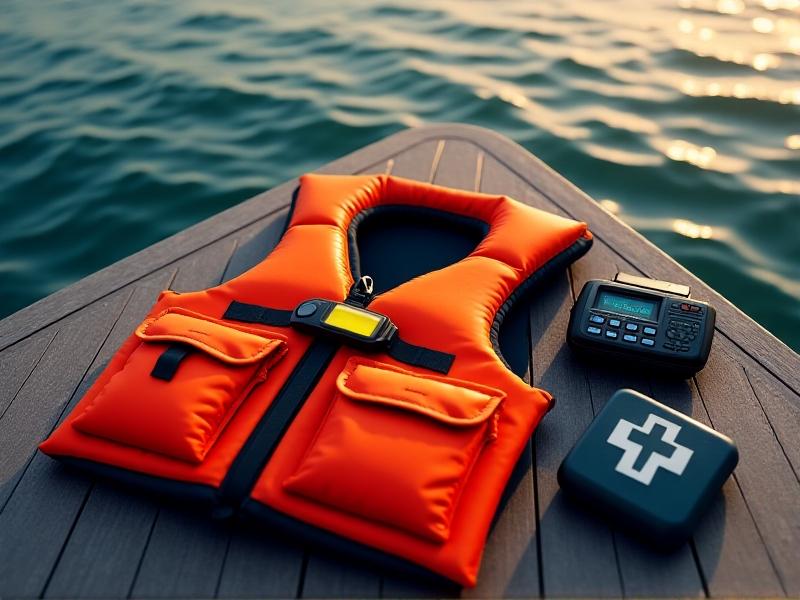Emergency Beacon Systems for Open Water
The Critical Role of Emergency Beacons in Open Water Safety

Every year, thousands of open water emergencies occur, from capsized boats to stranded swimmers. In these scenarios, time is the enemy, and visibility is scarce. Emergency beacon systems act as lifelines, bridging the gap between distress and rescue. Unlike traditional methods like flares or whistles, modern beacons transmit GPS-equipped distress signals via satellite, ensuring that even in the vastness of the ocean, a plea for help isn’t lost. Their reliability has turned them into non-negotiable tools for mariners, adventurers, and coastal communities.
The psychological impact of carrying a beacon cannot be overstated. For those navigating remote waters, knowing that a single button press can summon aid provides invaluable peace of mind. This technology has reduced rescue response times from days to hours, slashing mortality rates in maritime disasters. Stories of fishermen surviving days adpost-typhoon or sailors rescued mid-ocean underscore their transformative role in global water safety.
Types of Emergency Beacon Systems: EPIRBs, PLBs, and AIS
Emergency Position Indicating Radio Beacons (EPIRBs) are rugged, vessel-mounted devices designed for maritime use. When submerged or manually activated, they broadcast a vessel’s location to search-and-rescue networks. Personal Locator Beacons (PLBs), compact and portable, are ideal for kayakers, divers, or hikers near water. Unlike EPIRBs, they’re registered to individuals rather than vessels. Automatic Identification System (AIS) beacons, newer to the market, integrate with onboard navigation systems, sending real-time coordinates to nearby boats and rescue teams, enhancing collaborative rescue efforts.
Choosing between these systems depends on use case. EPIRBs suit long-haul sailors; PLBs cater to solo adventurers. AIS shines in crowded waterways where local coordination matters. Despite differences, all share a core purpose: turning isolation into actionable data for rescuers.
How Emergency Beacons Work: Technology Behind the Lifesaving Signals

When activated, emergency beacons emit a 406 MHz distress signal, detected by the COSPAS-SARSAT satellite network—a consortium of international satellites. This frequency, reserved exclusively for distress, pierces cloud cover and storms. The signal encodes unique identifiers, GPS coordinates, and registration details, routing to a Rescue Coordination Center (RCC) nearest to the emergency. Within minutes, the RCC deploys aircraft, coast guard vessels, or nearby ships.
Second-stage satellites in low Earth orbit calculate beacon locations via Doppler shift if GPS isn’t available, ensuring redundancy. This dual-layer system—GPS precision paired with Doppler calculations—guarantees location accuracy within 100 meters, even in the most hostile conditions.
Regulations and Standards: Compliance for Safety at Sea

International maritime law mandates EPIRBs for commercial vessels and recommends them for recreational boats in many jurisdictions. The Federal Communications Commission (FCC) and International Maritime Organization (IMO) enforce strict testing protocols for beacon certification, ensuring signals don’t interfere with other radio frequencies. COSPAS-SARSAT-compliant beacons must undergo buoyancy, temperature, and impact testing to earn approval.
Registration is equally critical. Unregistered beacons delay rescues, as authorities can’t confirm ownership or rule out false alarms. In the U.S., the National Oceanic and Atmospheric Administration (NOAA) maintains a registry linking beacons to emergency contacts. Regular updates—post-purchase or when transferring ownership—keep this lifeline current.
Integrating Beacons with Other Safety Equipment

Beacons aren’t standalone solutions; they’re nodes in a broader safety ecosystem. Pairing an EPIRB with a VHF radio enables two-way communication post-rescue initiation. Modern life jackets often include AIS-enabled beacons, turning passive flotation into active distress signals. Integration with onboard systems like chartplotters allows beacons to auto-activate during collisions or sinking, eliminating human error in crises.
Wearable tech adds another layer. Smartwatches with built-in distress buttons sync with smartphones to transmit locations via satellite networks like Iridium. This convergence of technologies creates redundant pathways for rescue, ensuring that even if one system fails, others compensate.
Real-Life Rescues: Case Studies of Beacon Success Stories
In 2022, a solo sailor’s EPIRB alerted New Zealand’s RCC after his catamaran capsized 200 nautical miles offshore. A cargo ship altered course, pulling him from the water within nine hours. Another case saw a PLB saving a hiker stranded on Alaska’s coast during a storm. The GPS coordinates guided a Coast Guard helicopter through zero-visibility conditions, pinpointing his exact location on a cliffside.
These stories highlight patterns: swift registration updates, proper beacon maintenance, and user training often dictate outcomes. Authorities emphasize that beacons aren’t “set-and-forget” devices but tools requiring proactive stewardship.
Maintenance and Best Practices for Beacon Reliability
Routine checks are vital. Batteries, typically lasting 5–10 years, must be replaced before expiration. Monthly self-tests—activating the beacon’s test mode without transmitting a signal—confirm functionality. Housing inspections for cracks or corrosion prevent water ingress, a common failure point. Storage matters: EPIRBs should mount in quick-access areas, not locked cabinets.
Registration databases demand equal attention. An outdated phone number or emergency contact renders a beacon’s data moot. Maritime safety courses, often offered by coast guards, teach users to pair beacon activation with survival tactics, like conserving body heat or securing drinking water.
Future Innovations in Emergency Beacon Technology
Emerging tech aims to shrink beacons further while expanding capabilities. Nano-satellites promise lower-cost, higher-coverage networks, reducing dependency on government-run systems. AI-powered beacons could analyze environmental data—like wave height or water temperature—to predict survival timelines, optimizing rescue strategies. Integration with unmanned drones might enable immediate airdrops of supplies upon beacon activation.
Researchers are also exploring biodegradable beacons for eco-sensitive areas, ensuring safety doesn’t come at environmental cost. As open-water activities grow, so does the beacon’s evolution—a relentless pursuit of turning desolation into hope.








